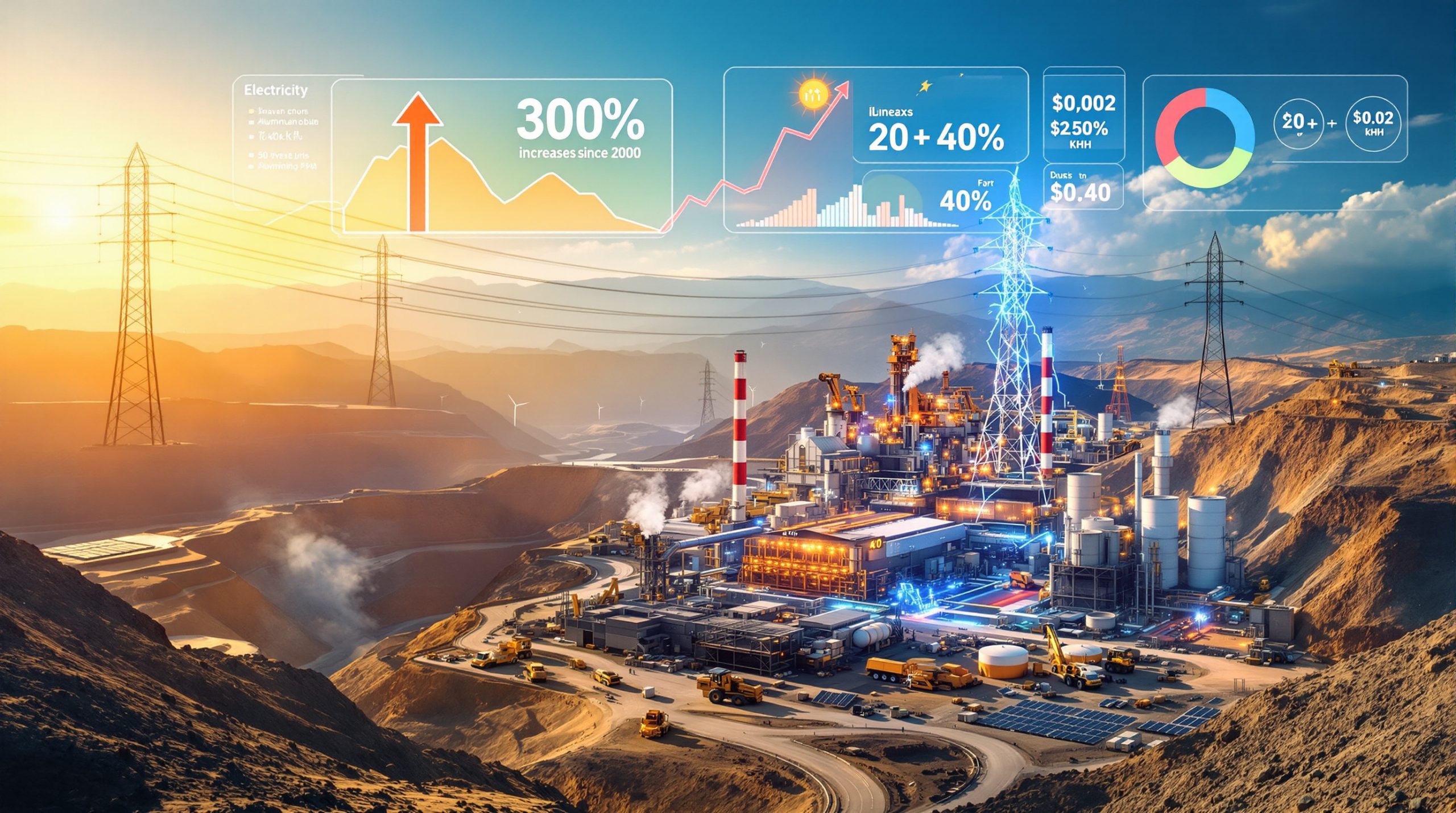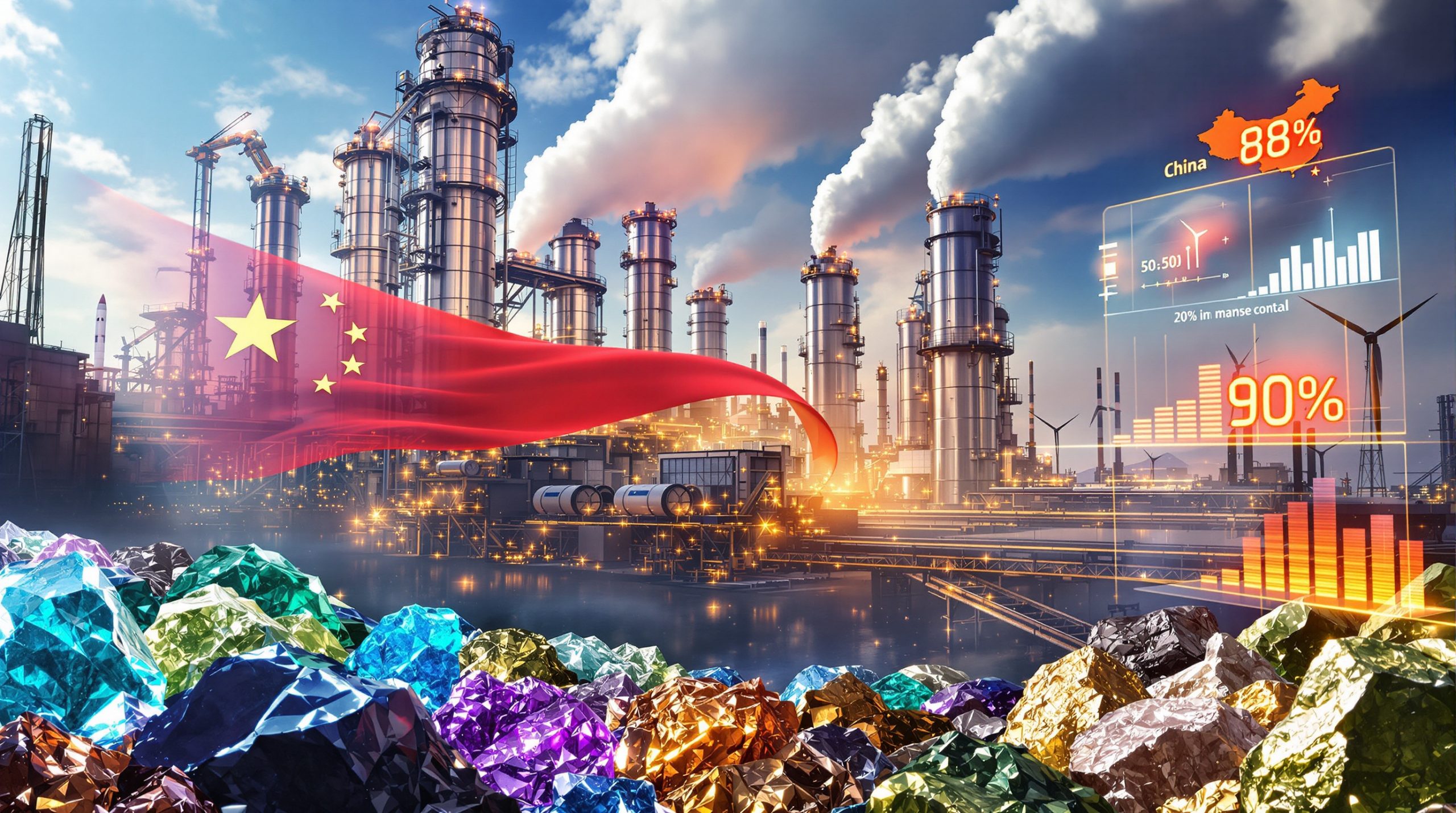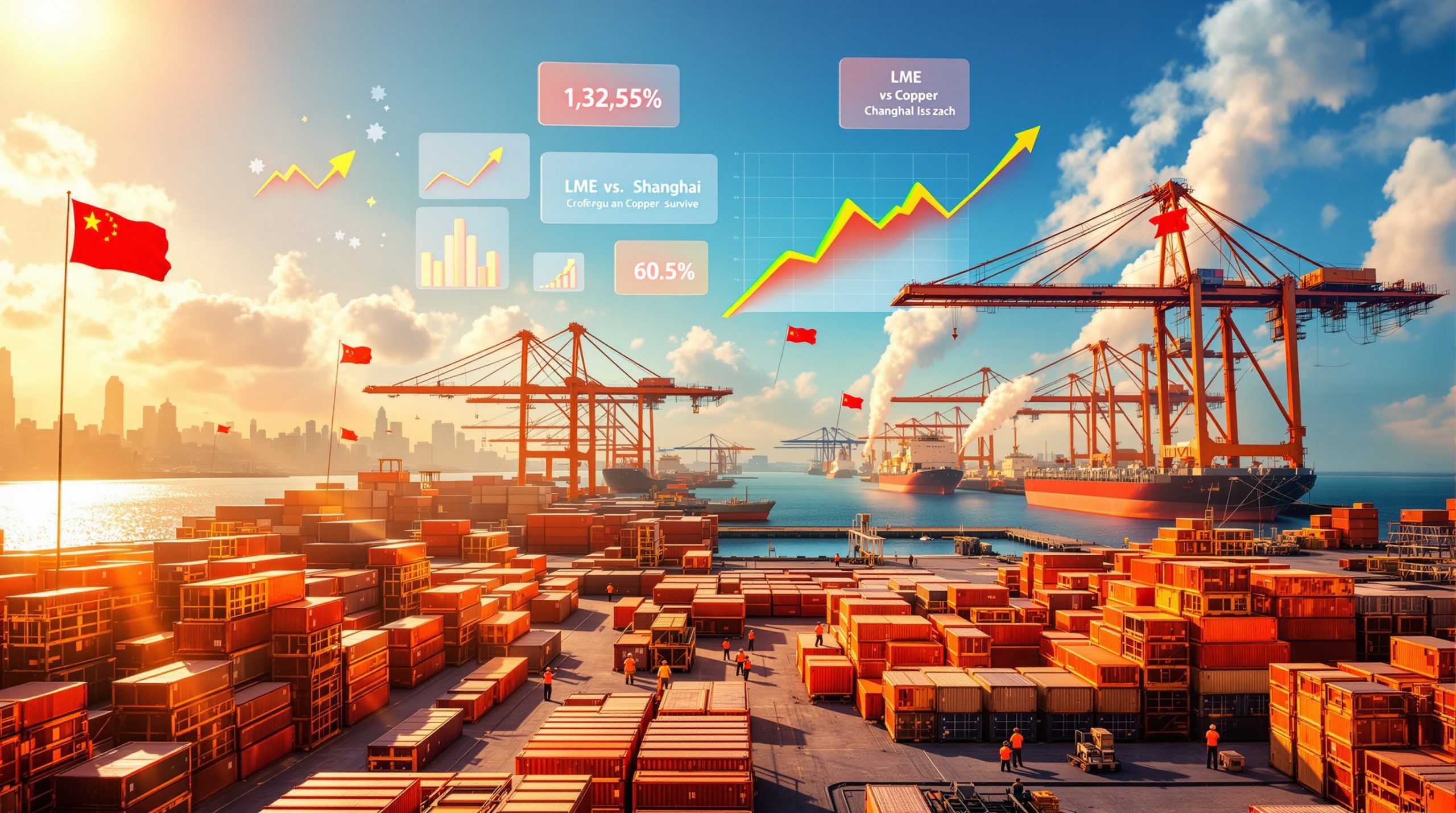Peru Weighs Approval of Mining Projects Worth $6 Billion
Peru, the world's third-largest copper producer, is currently evaluating 134 exploration and exploitation projects with a combined value of approximately $6 billion (21.69 billion Peruvian sol). This portfolio represents a strategic push to strengthen the country's crucial mining sector amid economic recovery efforts and ongoing formalization challenges.
The Peruvian government's ambitious evaluation pipeline aims to expand mineral production capacity while addressing persistent informal mining issues that have historically complicated the sector's development. Understanding the mineral exploration importance is crucial as these projects could significantly boost national revenue at a critical time when nearly 30% of the population continues to live in poverty.
Key Projects Under Consideration
The 134 mining projects currently under government review represent both exploration initiatives seeking to identify new mineral deposits and exploitation projects aimed at extracting previously discovered resources. The projects span various regions across the mineral-rich Andean nation, with a particular focus on copper, gold, silver, and zinc deposits.
"These projects represent Peru's continued commitment to responsible resource development while addressing historical challenges in the mining sector," notes a government spokesperson from the Ministry of Energy and Mines.
The evaluation process includes rigorous environmental impact assessments, community consultations, and feasibility studies process to ensure compliance with Peru's regulatory framework. Projects that successfully navigate this process will join Peru's productive mining portfolio, which has historically been dominated by copper extraction.
How Peru Is Addressing Informal Mining Challenges
Peru faces significant challenges in regulating its mining sector, with informal operations creating environmental, social, and economic concerns throughout mineral-rich regions. The government's formalization efforts have recently intensified as part of a broader strategy to bring the entire mining sector under regulatory oversight.
Current State of Informal Mining
More than 50,000 informal miners were recently excluded from the country's formalization program, representing a major shift in government policy toward unregulated extraction activities. Despite this reduction, approximately 31,000 miners remain in the formalization process, with the government aiming to fully regulate these remaining operations by the end of 2025.
The scale of informal mining in Peru has created significant challenges:
- Environmental degradation through unregulated mercury use and deforestation
- Loss of tax revenue from undocumented mineral sales
- Labor concerns including unsafe working conditions and child labor
- Social conflicts in mining communities
Recent protests by informal mining groups have disrupted critical mineral transport routes used by major mining companies including MMG Limited and Glencore, highlighting the ongoing tensions between formal and informal sectors of Peru's mining economy.
Government Initiatives for Formalization
The Peruvian government has implemented several initiatives to address the informal mining challenge:
- Ongoing dialogue with informal mining representatives to identify pathways to formalization
- Temporary suspension of protests during negotiation periods to facilitate productive discussions
- Development of potential new mining legislation designed to simplify the formalization process
- Creation of a private mining fund to improve financing access for small formal operators
This fund represents a particularly innovative approach, providing capital for equipment upgrades and environmental compliance measures that would otherwise be financially prohibitive for small-scale miners seeking to formalize their operations.
"The formalization process must balance regulatory compliance with economic realities for small operators," explains a mining policy expert from Lima. "The private fund creates a bridge for miners willing to formalize but lacking the financial resources to meet regulatory requirements."
Economic Impact of Peru's Mining Projects
The $6 billion investment pipeline represents a significant opportunity for Peru's economy, which has struggled to recover from recent political instability and the lingering effects of global economic challenges.
Potential Benefits to Peru's Economy
Mining projects of this scale typically deliver multiple economic benefits:
- Increased tax revenue: Formalized mining operations contribute significantly to the national treasury through taxes and royalties
- Job creation: Both direct employment in mining operations and indirect employment in supporting industries
- Infrastructure development: New and expanded roads, power systems, and water infrastructure to support mining operations
- Regional development: Economic growth in historically underserved mining regions
- Export earnings: Enhanced foreign exchange through mineral exports, strengthening Peru's balance of trade
According to industry analysts, each $1 billion in mining investment typically generates approximately 5,000-7,000 direct and indirect jobs during construction phases, with several thousand permanent positions created during operational phases.
Current Economic Context
Peru's economy is recovering from a recession triggered by political unrest in recent years. With nearly 30% of the population still living in poverty, the mining industry evolution represents a critical pathway for economic development and poverty reduction.
The country's significant mineral endowment—particularly in copper, which is essential for renewable energy technologies and electric vehicles—positions Peru strategically in global markets increasingly focused on energy transition materials.
| Mineral | Peru's Global Ranking | Economic Significance |
|---|---|---|
| Copper | 3rd largest producer | Critical for renewable energy transition |
| Silver | 2nd largest producer | Industrial applications and investment |
| Zinc | 2nd largest producer | Galvanizing and alloys for construction |
| Gold | 8th largest producer | Reserve asset and electronics |
This mineral diversity provides economic resilience while creating opportunities across various commodity cycles, though the development approach must balance investment attraction with social responsibility and environmental protection.
Major Mining Companies Operating in Peru
Peru's mining landscape includes a mix of international majors, mid-tier producers, and junior exploration companies, creating a diverse operational ecosystem focused on the country's rich mineral endowment.
Key Industry Players
MMG Limited, a Chinese-owned multinational, operates the Las Bambas copper mine, one of Peru's largest copper producers despite facing periodic community protests and logistical challenges. The company has invested significantly in community development programs to secure social license for operations.
Glencore, the Swiss-based commodities giant, maintains several operations in Peru, including the Antapaccay copper mine and interests in zinc production. Their long-term presence in the country has established them as a major contributor to Peru's mining economy.
Other significant players include:
- Buenaventura: Peru's largest publicly-traded precious metals company
- Southern Copper: Major copper producer controlled by Grupo México
- Freeport-McMoRan: Operating the Cerro Verde copper mine
- Newmont: With gold mining operations in Yanacocha
Numerous junior exploration companies are also active across Peru, conducting early-stage exploration that may eventually lead to development projects entering the current $6 billion project pipeline.
Industry Challenges
The mining sector faces several operational challenges:
- Transport disruptions: Recent protests have blocked key mineral transport corridors
- Regulatory uncertainty: Evolving requirements during the formalization process
- Water management: Competing demands in arid mining regions
- Community relations: Securing and maintaining social license to operate
- Environmental compliance: Meeting increasingly stringent requirements
Companies must navigate these challenges while maintaining productive operations, often requiring sophisticated stakeholder engagement strategies and substantial investments in community development initiatives.
Political Factors Influencing Peru's Mining Sector
Peru's political landscape significantly impacts investment decisions and operational stability in the mining sector, with recent years characterized by frequent leadership changes and policy shifts.
Current Political Landscape
President Dina Boluarte leads the current administration, which is expected to remain in office until 2026. Her government has prioritized mining sector reforms, particularly focusing on the formalization of informal operations and attraction of new investment.
The administration faces several political challenges:
- Ongoing investigation into protest-related deaths (allegations denied by the president)
- Recent controversy over a presidential salary increase approved by cabinet vote
- Balancing investment promotion with environmental and social concerns
- Maintaining political stability in a historically volatile governance environment
These factors create a complex landscape for mining investment insights who typically seek regulatory predictability and political stability when making long-term capital commitments.
Political History Context
President Boluarte succeeded former president Pedro Castillo, who was arrested after attempting to unlawfully dissolve Congress in December 2022. This transition created initial uncertainty in the mining investment climate, though the current administration has worked to reassure investors of Peru's commitment to responsible mining development.
The country's history of political volatility—having had six presidents in the past five years—remains a concern for mining investors contemplating projects with multi-decade lifespans. Establishing a consistent regulatory framework has proven challenging in this environment, though the current $6 billion project pipeline suggests investor confidence is gradually returning.
Peru's Mining Strategy in Regional Context
Peru's mining development occurs within a competitive Latin American landscape, where countries including Chile, Brazil, Mexico, and Colombia all vie for mining investment capital.
Regional Collaboration Initiatives
Peru has demonstrated willingness to engage in cross-border infrastructure collaboration, as evidenced by its recent agreement with Ecuador's state oil company Petroecuador. This arrangement will connect Ecuadorean oilfields to Peru's pipeline network, facilitating transport to Peru's Talara refinery.
This infrastructure cooperation model could potentially extend to mineral transport and processing facilities, creating regional efficiency in resource development. Similar arrangements could benefit mining operations in border regions by providing more direct export routes and shared processing facilities.
Competitive Position in Latin America
As Latin America's third-largest copper producer globally (behind Chile and Mexico), Peru maintains a strong competitive position based on several factors:
- Geological potential: Significant undeveloped mineral resources
- Mining tradition: Established expertise and operational history
- Strategic location: Pacific Coast access to Asian markets
- Diverse mineral portfolio: Beyond copper to gold, silver, zinc, and others
The country faces regional competition from:
- Chile: World's largest copper producer with established regulatory framework
- Brazil: Significant iron ore and base metals producer with large domestic market
- Colombia: Emerging mining jurisdiction with improving investment climate
- Ecuador: Rapidly developing mining sector with major recent discoveries
Peru's ability to efficiently advance its $6 billion project pipeline while addressing informal mining challenges will significantly influence its competitive position within this regional context.
Balancing Mining Growth with Social Development
Peru's mining development strategy must balance economic growth objectives with social development priorities to ensure sustainable sector growth and equitable distribution of benefits.
Sustainable Development Priorities
For Peru's mining sector to deliver long-term benefits, several priorities require attention:
- Environmental management: Implementing best practices in water conservation, tailings management, and rehabilitation
- Community engagement: Ensuring meaningful participation in development decisions
- Benefit sharing: Creating mechanisms for equitable distribution of mining revenues
- Value addition: Developing downstream processing to capture more economic value
- Skills development: Building local technical capacity through education and training
The private mining fund being developed for small-scale miners represents one innovative approach to addressing these priorities, providing both financing and technical support for sustainable mining practices.
Investment Climate Improvements
To fully realize the potential of the $6 billion project pipeline, Peru must continue improving its investment climate through:
- Regulatory clarity: Establishing clear, consistent rules for project development
- Permit streamlining: Reducing bureaucratic delays while maintaining standards
- Infrastructure development: Investing in transportation networks and power systems
- Political stability: Building institutional strength beyond individual administrations
- Conflict resolution: Creating effective mechanisms for addressing community concerns
"Peru's mining potential remains world-class, but realizing that potential requires addressing fundamental governance and social challenges," notes a mining analyst from a leading international consultancy. "The current project pipeline demonstrates investor interest despite these challenges."
FAQ: Peru's Mining Investment Landscape
What is the timeline for approval of these mining projects?
The Peruvian government has not announced specific timelines for individual project approvals within the $6 billion pipeline. However, the formalization of remaining informal miners is targeted for completion by the end of 2025, which may accelerate project approvals by reducing social conflicts. Typically, mining projects require 2-5 years from initial application to final approval, depending on complexity and community factors.
How might these investments affect local communities?
Mining investments typically create both opportunities and challenges for local communities. Benefits often include:
- Direct employment opportunities (typically 5,000-7,000 jobs per $1 billion invested)
- Local procurement of goods and services
- Infrastructure improvements including roads and water systems
- Community development programs funded through taxes and voluntary contributions
However, communities may also experience:
- Environmental concerns including dust, noise, and water impacts
- In-migration pressures on local services and housing
- Cultural and social changes from rapid development
- Potential land use conflicts
Successful projects typically implement comprehensive community engagement strategies and formal benefit-sharing agreements.
What minerals beyond copper are targeted in these projects?
While Peru is known for copper production, the $6 billion project pipeline includes diverse mineral targets:
- Gold: Particularly in the northern regions of Cajamarca and La Libertad
- Silver: Often produced as a by-product of gold and base metal mining
- Zinc: In polymetallic deposits throughout the central highlands
- Lead: Frequently associated with zinc deposits
- Molybdenum: Common by-product of copper mining
- Lithium: Emerging exploration target for battery materials
This mineral diversity helps buffer Peru's mining economy against price volatility in any single commodity market.
How will Peru ensure environmental compliance in new mining projects?
All approved projects must meet Peru's environmental regulations administered by the Ministry of Environment and enforced by the Environmental Evaluation and Enforcement Agency (OEFA). Requirements typically include:
- Detailed environmental impact assessments reviewed by multiple agencies
- Water management plans to minimize consumption and prevent contamination
- Waste management systems including tailings facility design and monitoring
- Closure and reclamation planning with financial assurance mechanisms
- Ongoing monitoring and reporting throughout the mine lifecycle
Many projects now voluntarily adopt international standards beyond national requirements, particularly for projects seeking international financing. Furthermore, the mine reclamation importance is increasingly recognized as a critical component of sustainable mining practices.
What is the current status of mining protests in Peru?
Informal miners have temporarily suspended protests and blockades while engaging in dialogue with the government about potential new mining legislation. However, community protests related to environmental concerns, benefit-sharing disputes, and land access issues continue periodically throughout mining regions.
These actions occasionally disrupt operations at major mines, including transport routes used by companies like MMG Limited and Glencore. The government continues to work on dialogue mechanisms to address underlying causes of mining-related social conflicts.
Peru's Path Forward: Balancing Mining Growth with Social Development
Peru stands at a critical juncture in its mining development trajectory. With $6 billion in projects under consideration and ongoing efforts to formalize the remaining 31,000 informal miners, the country has an opportunity to transform its mining sector into a more inclusive, sustainable engine for national development.
Success will require addressing fundamental challenges in governance, environmental protection, and social inclusion while creating an attractive investment climate for responsible mining companies. The current administration's commitment to completing the formalization process by 2025 represents an important step toward this vision.
As global demand for copper and other minerals critical to the energy transition continues to grow, Peru's rich geological endowment positions the country favorably for sustainable development—provided it can effectively balance economic, environmental, and social priorities in its mining industry evolution approach.
Looking for Early Insights on the Next Major ASX Mineral Discovery?
Discovery Alert's proprietary Discovery IQ model delivers real-time alerts on significant ASX mineral discoveries, instantly empowering subscribers to identify actionable opportunities ahead of the broader market. Understand why historic discoveries can generate substantial returns by visiting Discovery Alert's dedicated discoveries page and begin your 30-day free trial today.




